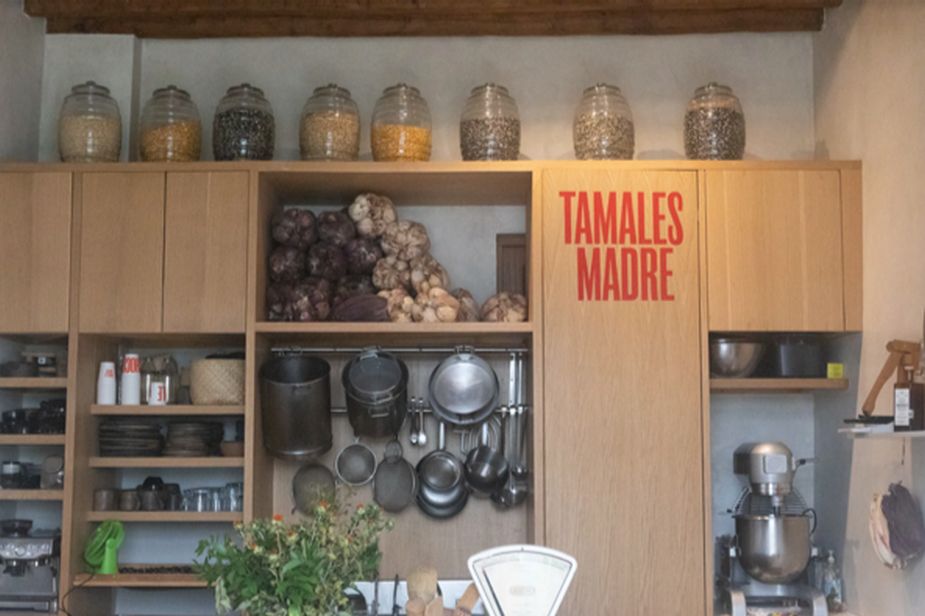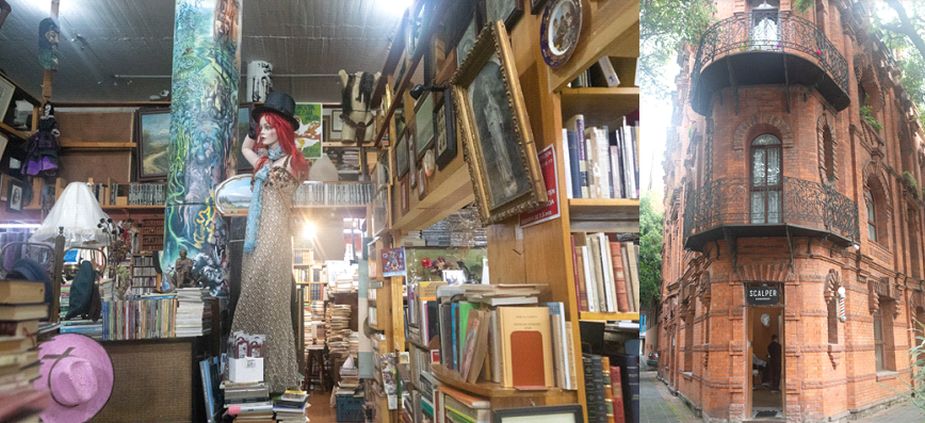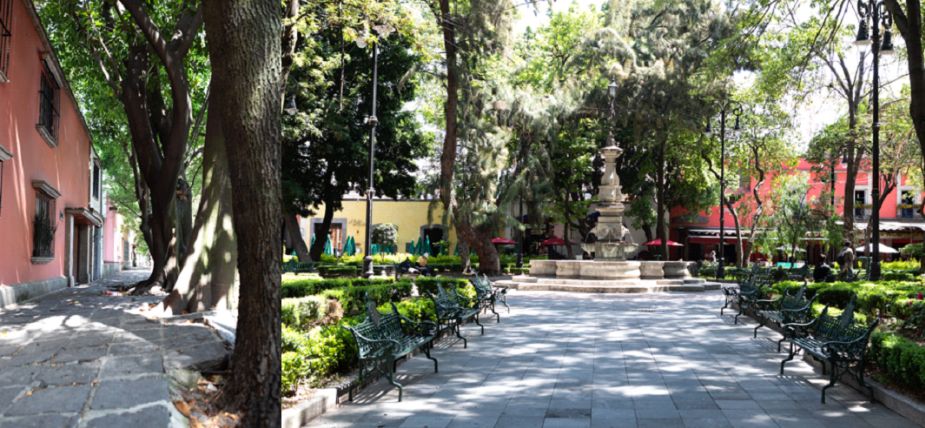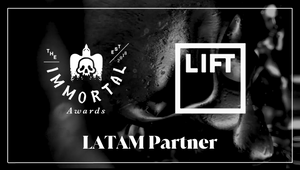
Our Man in Mexico: Colonia Juárez

It’s early morning in México City, and the soft buzz of the traffic outside masks the tangled flow of dashing cars and speedy food carts that recklessly mingle among them. I hear a loud laugh through the window. I glance outside wondering who it might have been, but I don’t see anyone specific. As I take a closer look, the belle époque buildings that dot Berlin Street catch my eye and remind me that there’s a whole other world here, breathing and living just underneath the constantly modernising facade of the Colonia Juárez. I get dressed quietly, a feeling of excitement creeping up my neck.
In the century since she was founded, in 1903, the city has changed her name and personality many times: in the beginning, she was the most exclusive neighbourhood for the Porfirian elite, who chose to build majestic European-style manors to flaunt their European elegance and flair. Some of them, like the Marso Gallery or the House of Tabasco, remain proud symbols of the area’s sophisticated past.
However, as other quarters like Polanco and Lomas de Chapultepec rose above it, it became less residential and more commercial. Cafés, restaurants, antique shops and libraries started appearing in every corner of this little Europe, and by the fifties it had become the heart of intellectual and artistic life in the capital. It isn’t hard to picture a young Pita Amor walking down the street with us, dressed only in black mink and red lipstick. I imagine she would comment on the little details on the Castillo Colorado, wondering perhaps what kind of people its inhabitants were. Were they as eclectic and mysterious as the building itself? Maybe. I’d pay to hear the stories those walls could tell.
Let’s make a quick stop for coffee in Rosetta Bakery. Tall colonial doors welcome us into a small double-height hall, its inside patio brimming with lush vines and conversation. I bask in its romantic atmosphere for a good ten minutes before I get what I came for and get on the streets again. I keep thinking about how the morning light spilled so softly into the old room, really highlighting the original art-deco finishes on the wall. That delicate elegance immediately reminds me both of the residential complex El Buen Tono and of the EBC rectory. The inside passages that connect the three art deco buildings of El Buen Tono have the same quiet elegance that I felt in Café Nin, and so does the former home of Baroness Nancy Oakes. Perhaps the vibe is a bit more peculiar in the latter, since – rumor has it – its story is filled with mystery and intrigue. But that’s a story for another day.

I’ll let you in on a little secret: The Juárez has two completely distinct personalities, depending on which side of Insurgentes Avenue you’re on. So far we’ve been in the more sophisticated part of it. But now we’re going into the deep heart of the Zona Rosa, and it’s electrifying. Today it’s not what it used to be in the fifties, sixties or even the eighties, but it’s just as powerful and enticing as it was back then. Too shy to be red, but too cheeky to be white, as chronicler Vicente Leñero pointed out, the Grand Dame of the Colonia Juárez always has something interesting cooking in the oven. From the bohemian cafés where the artistic and intellectual elite gathered in the sixties to the thrilling countercultural scene that was initiated by the gay community in the eighties, or even the Korean cultural boom that today attracts locals and tourists alike into small restaurants and karaoke, the Zona Rosa has always been home to the most unconventional, loving, brave and unwanted characters of society. But they are precisely who have made this quarter such a unique place.


I’m in the mood for older stories today though, so let’s change the scenery for a bit. I read once that about a century ago, the Porfirian elites would live in the Colonia Juárez but spend their weekends by the countryside, which back then meant Coyoacán and San Ángel. These quarters are not only amongst the most stunning places in Mexico City, but also the oldest. After the Conquest, Coyoacán became the first capital of the Viceroyalty of New Spain. Shortly after the Dominican Order founded the nearby town of San Ángel. These colonial origins would become the foundation of their respective identities, even if they would continue to welcome the influence of artists and intellectuals from overseas for decades to come.

However, this profound historical dimension is but one layer of these two similar but clearly distinct neighborhoods. Coyoacán is famous for its Sunday afternoons, when families and lovers typically buy ice cream and stroll along the cobbled halls of the Centennial Garden, embraced by the strident music from the organilleros that stand around the church of San Juan Bautista. I’ve seen all sorts of interesting characters right there. Fortune-tellers, poets and painters, politicians and office workers mingle in and out of little cafés and well-known restaurants, listen to the legends that tourist guides tell time and again, or simply let their feet guide them through the narrow maze of secret streets and alleys that lead to its residential heart.
It’s customary to walk through Francisco Sosa Street, formerly known as the Old Way to San Ángel. It’s not only awe-inspiring, but also home to some of the most well-guarded secret delights a film lover could find: The Esperanza Cinema, a movie theater from the forties where Agustín Lara was said to play the piano during projections to enliven the atmosphere. Tourists and neighbours alike cherish the memory of the theater, even if it was refurnished as a home in the early seventies. And right next to it is the Culture House Jesús Reyes Heroles, an old manor built in colonial times. Its luscious gardens and arched windows are filled today with art exhibitions and theater lessons; once again, the past and the present overlap when the stories of the living meet the legends of long ago, and I can’t help but wonder about all the things those walls must have seen. We’ll never know, but maybe we can imagine it.

Our last stop in this journey is the Quarter of San Ángel, Coyoacán’s slightly younger but fancier cousin. It’s been a favourite of Mexico’s high society since Porfirian times, when its majestic art-nouveau styled mansions were built for their pleasure (and ours, of course). Winding streets lead to such a charming plaza you won’t believe you’re still in contemporary Mexico City. Oh, but it is, and this is the San Jacinto Plaza. The hustle and bustle of a few dozen painters setting up shop early in the morning feels exciting, almost like sneaking into a rehearsal right before the curtain draws. But painters aren’t the only artists around, nor are paintings the only art on sight. The plaza itself is getting ready to offer all sorts of wonders to her visitors. The pastel-coloured buildings that frame it sometimes hide other plazas inside them, like architectural matryoshka dolls; the Café de las Artes is a particularly beautiful example, since it blends contemporary and colonial architecture quite seamlessly. San Ángel is one of those places that never truly unveils its secrets completely, but it welcomes everyone to try and figure them out. Maybe we don’t have to, I think to myself as I make my way out of the quarter through Bitterness Street. Some things are better left unknown. The mystery that cloaks San Ángel will perhaps soak into the future stories we’ll tell here too, and that’s her gift to us storytellers from all over the world.

So as you can see, México City has so much to offer our production communities, from the amazing locations that tell stories, to our wonderful people, traditions and culture.
We can’t wait to show you all of this when you visit our country.
We hope to see you soon.
Avelino x













